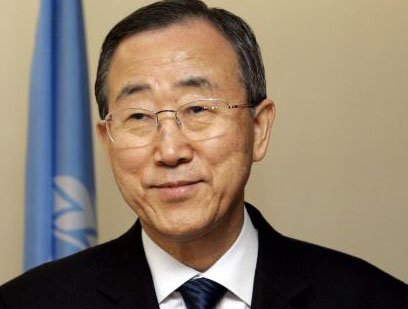ID :
260799
Wed, 10/24/2012 - 13:24
Auther :
Shortlink :
https://www.oananews.org//node/260799
The shortlink copeid
UN MARKS ITS DAY

Ulaanbaatar, Mongolia /MONTSAME/ The UN Secretary-General Mr Ban Ki-moon sends the message on the occasion of the United Natons Day which annually falls on October 24.
"We are living through a period of profound turmoil, transition and transformation. Insecurity, inequality and intolerance are spreading. Global and national institutions are being put to the test. With so much at stake, the United Nations must keep pace across the spectrum of its activities - peace, development, human rights, the rule of law, the empowerment of the world's women and youth.
"There has been important progress on many fronts. Extreme poverty has been cut in half since the year 2000. Democratic transitions are under way in many countries. There are encouraging signs of economic growth across the developing world.
Now is the time to raise our collective ambitions. With the 2015 deadline for the Millennium Development Goals fast approaching, we must intensify our efforts to reach all of these lifesaving targets. We must prepare a bold and practical post-2015 development agenda. And we must continue to combat intolerance, save people caught in conflicts and establish lasting peace.
"The United Nations is not just a meeting place for diplomats. The United Nations is a peacekeeper disarming fighters, a health worker distributing medicine, a relief team aiding refugees, a human rights expert helping deliver justice.
"In carrying out this global mission we rely on countless friends and supporters. Non-governmental organizations, scientists, scholars, philanthropists, religious leaders, business executives and concerned citizens are critical to our success. No single leader, country or institution can do everything. But each of us, in our own way, can do something.
"On this UN Day, let us reaffirm our individual commitment and our collective resolve to live up to the ideals of the United Nations Charter and build a better world for all," says mr Ban Ki-moon in his message.
xxxxx
United Nations Day - Quick Facts
On October 24 of 1945, the United Nations (UN) came into force when the five permanent members of the security council ratified the charter that had been drawn up earlier that year. These members were France, the Republic of China, the Soviet Union, the United Kingdom and the United States.
Since 1948, the event's anniversary has been known as United Nations Day. It is an occasion to highlight, celebrate and reflect on the work of the United Nations and its family of specialized agencies.
On and around October 24, many activities are organized by all parts of the UN, particularly in the main offices in New York, the Hague (Netherlands), Geneva (Switzerland), Vienna (Austria) and Nairobi (Kenya). These include: concerts; flying the UN flag on important buildings; debates on the relevance of the work of the UN in modern times; and proclamations by state heads and other leaders.
Background
The foundations for a “League of Nations” were laid in the Treaty of Versailles, which was one of the treaties to formally end World War I. The treaty was signed in Versailles, France, on June 28, 1919. The league aimed to encourage disarmament, prevent outbreaks of war, encourage negotiations and diplomatic measures to settle international disputes and to improve the quality of life around the world. However, the outbreak of World War II suggested that the League of Nations needed to take on a different form.
The ideas around the United Nations were developed in the last years of World War II, particularly during the UN Conference on International Organization in San Francisco, the United States, beginning on April 25, 1945. The UN was officially created when a UN charter was ratified on October 24 that year.
United Nations Day was first observed on October 24, 1948. The UN recommended that United Nations Day should be a public holiday in member states since 1971. There were also calls for United Nations Day to be an international public holiday to bring attention to the work, role and achievements of the UN and its family of specialized agencies. These have been spectacular, particularly in the fields of human rights, support in areas of famine, eradication of disease, promotion of health and settlement of refugees.
The UN does not work alone but together with many specialized agencies, including: the World Health Organization (WHO); the Food and Agriculture Organization (FAO); the United Nations Educational, Scientific and Cultural Organization (UNESCO); the United Nations Children's Fund (UNICEF); International Labour Organization (ILO); United Nations High Commissioner for Refugees (UNHCR); and United Nations Human Rights Council (UNHRC).
Symbols
The UN emblem consists of a projection of the globe centered on the North Pole. It depicts all continents except Antarctica and four concentric circles representing degrees of latitude. The projection is surrounded by images of olive branches, representing peace. The emblem is often blue, although it is printed in white on a blue background on the UN flag.





